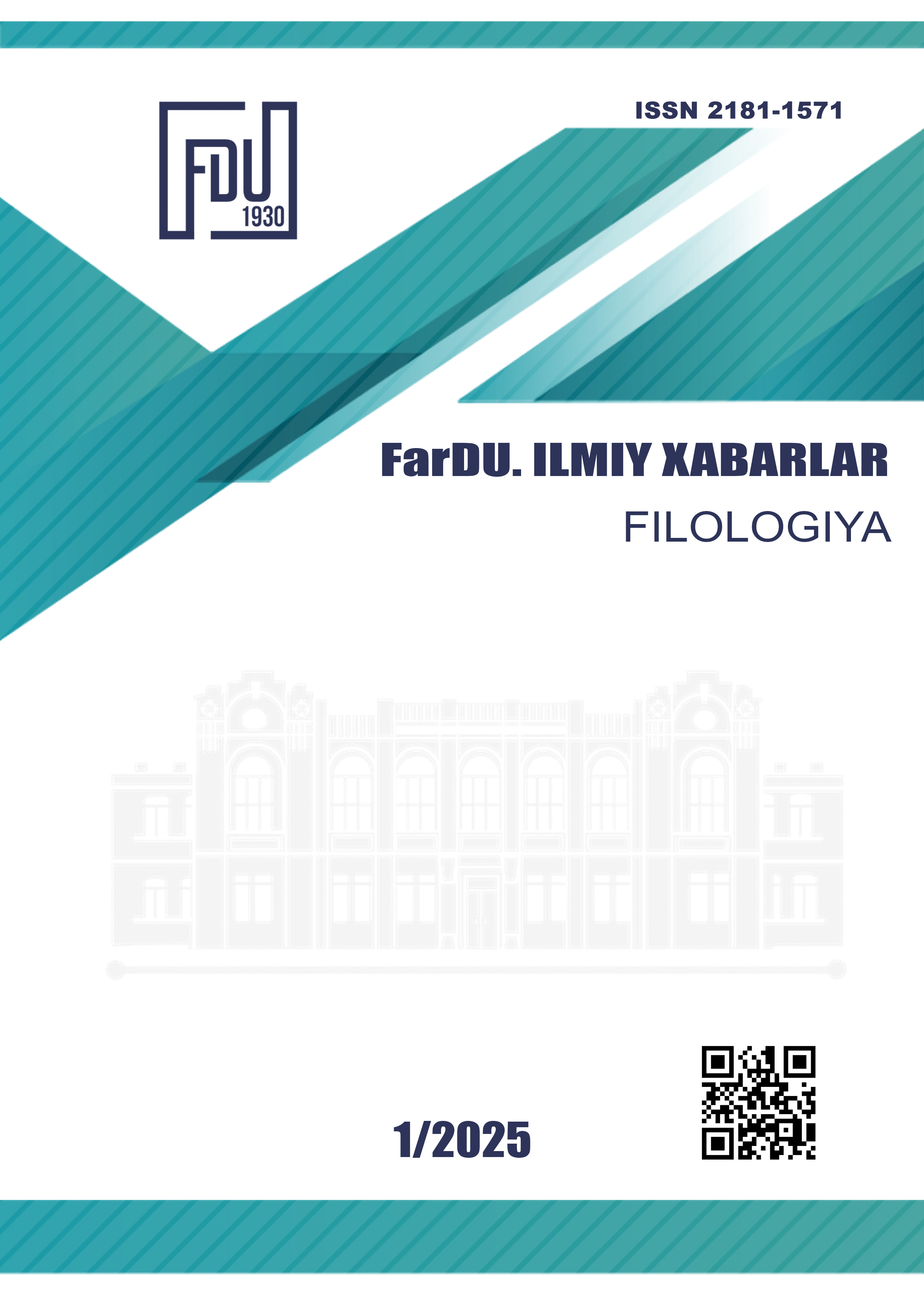RESEARCH ON THE INFLUENCE OF LANGUAGE CONTACTS ON TURKIC LANGUAGES: HISTORY AND CLASSIFICATION
Keywords:
Keywords: research of Turkic languages, Turkic languages, classification, groups of Tur-kic languages, language family, vocabularyAbstract
In this article, a comprehensive study of the impact of language contact on the formation and development of Turkic languages is presented. The aim of the research is to identify mechanisms of borrowing and the influence of various linguistic systems on the morphological, syntactic, and phonetic structures of the Turkic language family. To achieve this, comparative-historical analysis, content analysis of empirical data, and modern computer-assisted linguistic methods are employed, integrating classical approaches with innovative research technologies. The study is based on an extensive review of domestic and international literature, including classical works and contemporary publications reflecting the influence of Mongolian, Iranian, Slavic, Chinese, and other languages on Turkic languages. The results demonstrate that language contacts play a key role in the dynamic evolution of the Turkic linguistic system, contributing to the emergence of new dialects, changes in lexical bases, and the adaptation of grammatical constructions under external influences. The conclusions underscore the need for further interdisciplinary studies to deepen our understanding of language formation processes in the context of globalization and cultural heritage preservation, thereby strengthening national identity and promoting intercultural dialogue. These findings provide a basis for developing new methodological approaches in linguistics.
References
Радлов, В. В. (1893). Опыт словаря тюркских наречий (Т. 1–4). Санкт-Петербург: Им-ператорская Академия наук.
Самойлович, А. Н. (1930). Краткая классификация тюркских языков. Москва: Изда-тельство АН СССР.
Баскаков, Н. А. (1988). Историко-типологическая фонология тюркских языков. Москва: Наука.
Щербак, А. М. (1963). О характере лексических взаимосвязей тюркских, монгольских и тунгусо-маньчжурских языков. Тюркологический сборник, 1, 98–115.
Гаджиева, Н. З. (2000). К вопросу о классификации тюркских языков и диалектов. Вестник Института языкознания РАН, (2), 45–60.
Лингвистический энциклопедический словарь. (1990). Москва: Советская энциклопе-дия.
Кругосвет. (2020). Тюркские языки. Получено с https://www.krugosvet.ru/enc/gumanitarnye_nauki/lingvistika/TYURKSKIE_YAZIKI.html
Большая российская энциклопедия. (2004–2017). Тюркские языки. Москва: Большая российская энциклопедия.
Nazarov, A. A. (2015). Istoriya uzbekskogo yazyka [История узбекского языка]. Tashkent: Universitet.
Burchanov, A. A. (2018). Leksicheskie zaimstvovaniya v uzbekskom yazyke [Лексические заимствования в узбекском языке]. Tashkent: Fan va Texnologiya.
Abdullaeva, N. K. (2023). The development of the Uzbek language in the context of global-ization. Central Asian Journal of Literature and Cultural Studies, 2(1), 78–88. https://doi.org/10.53796/cajlcs.v2i1.12
Tukhliyeva, M. R. (2022). The role of English loanwords in the modern Uzbek language. Uzbek Journal of Philology, 5(2), 100–114.
Johanson, L. (2019). Contact-induced change in the Turkic languages. In J. Matras & P. Bakker (Eds.), The Routledge Handbook of Language Contact (pp. 512–529). London: Routledge.
Erdal, M. (2021). A grammar of Old Turkic. Brill.
Abdullaeva, A., & Tukhliyeva, M. (2022). Digital approaches to Turkic language contact. Journal of Turkic Linguistic Studies, 7(2), 112–128. https://doi.org/10.1234/jtls.2022.7.2.112
Downloads
Published
Issue
Section
License
Copyright (c) 2025 Scientific journal of the Fergana State University

This work is licensed under a Creative Commons Attribution-NonCommercial-NoDerivatives 4.0 International License.
Most read articles by the same author(s)
- Луиза Галимуллина , COMPARATIVE ANALYSIS OF PHRASEOLOGICAL UNITS WITH THE COMPONENT OF PRECIOUS STONES AND METALS IN ENGLISH AND RUSSIAN LANGUAGES WITHIN THE PHRASEOSEMANTIC FIELD OF "KINDNESS" , Scientific journal of the Fergana State University: No. 6 (2024): Scientific journal of the Fergana State University ADDITIONAL COLLECTION (Social humanities sciences)

